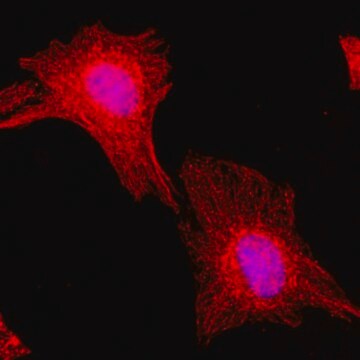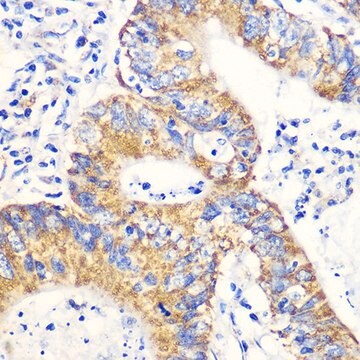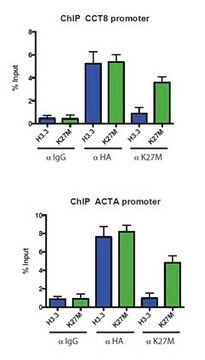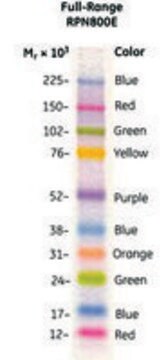Kluczowe dokumenty
SAB4200651
Monoclonal Anti-Histone H3 (C-terminal) antibody produced in mouse
clone H6.10, purified from hybridoma cell culture
About This Item
immunofluorescence: 5-10 μg/mL using using HeLa cells.
Polecane produkty
pochodzenie biologiczne
mouse
Poziom jakości
forma przeciwciała
purified immunoglobulin
rodzaj przeciwciała
primary antibodies
klon
H6.10, monoclonal
Formularz
buffered aqueous solution
masa cząsteczkowa
antigen ~14 kDa
reaktywność gatunkowa
chicken, human, monkey, hamster, canine
stężenie
~1 mg/mL
metody
immunoblotting: 0.25-0.5 μg/mL using using histones isolated from human HeLa cells.
immunofluorescence: 5-10 μg/mL using using HeLa cells.
izotyp
IgG1
Warunki transportu
dry ice
temp. przechowywania
−20°C
docelowa modyfikacja potranslacyjna
unmodified
informacje o genach
human ... HIST1H3A(8350)
Opis ogólny
Immunogen
Zastosowanie
- immunoblotting
- immunofluorescence
- western blotting
Działania biochem./fizjol.
Postać fizyczna
Oświadczenie o zrzeczeniu się odpowiedzialności
Nie możesz znaleźć właściwego produktu?
Wypróbuj nasz Narzędzie selektora produktów.
Kod klasy składowania
10 - Combustible liquids
Klasa zagrożenia wodnego (WGK)
WGK 1
Temperatura zapłonu (°F)
Not applicable
Temperatura zapłonu (°C)
Not applicable
Wybierz jedną z najnowszych wersji:
Certyfikaty analizy (CoA)
Nie widzisz odpowiedniej wersji?
Jeśli potrzebujesz konkretnej wersji, możesz wyszukać konkretny certyfikat według numeru partii lub serii.
Masz już ten produkt?
Dokumenty związane z niedawno zakupionymi produktami zostały zamieszczone w Bibliotece dokumentów.
Nasz zespół naukowców ma doświadczenie we wszystkich obszarach badań, w tym w naukach przyrodniczych, materiałoznawstwie, syntezie chemicznej, chromatografii, analityce i wielu innych dziedzinach.
Skontaktuj się z zespołem ds. pomocy technicznej






